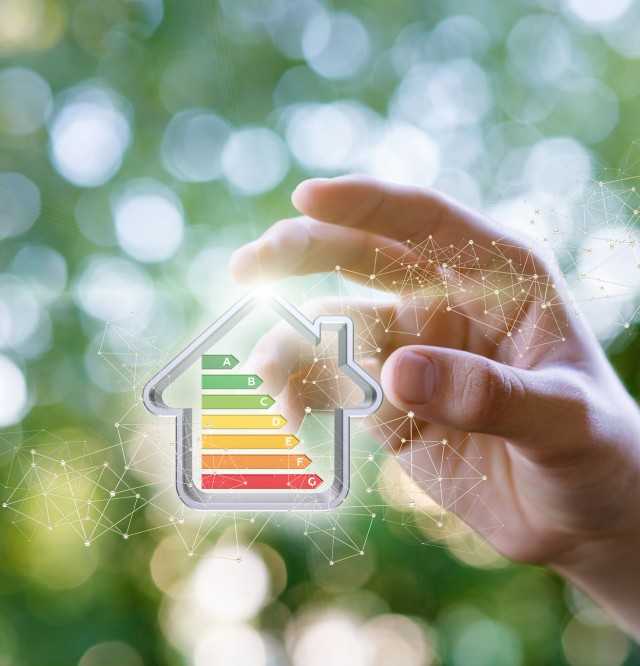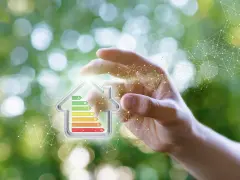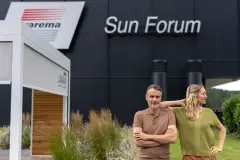
Energy savings With modern sun shading
The lights are on and the heating is running – for a complete feeling of well-being, the room must offer a perfect ambience. No wonder, then, that around 36 percent of final energy consumption in Germany is accounted for by the building sector, as found by the dena Building Report Compact 2018. And much greater levels of efficiency can be reached. Smart Home automation is able to create a pleasant room climate while saving energy for heat and power at the same time. The automated sun shading system plays a key role here. Live sustainably and use the power of the sun: Automated sun shading systems save energy for heat, light and cooling
Energy savings with an optimal sun shading system
Depending on the building, the right combination of building and automated sun shading system can save up to 70% of cooling energy and up to 30% of heating energy.
Energy needs and user comfort Advantages of sun shading systems
WAREMA has analysed the CO2 footprint of window awnings, roller shutters and external venetian blinds. The result clearly shows that an external sun shading system can save up to 28 times more CO2 in its use phase than is produced during its entire life cycle. This is a powerful argument for external sun shading systems.
In the face of rising temperatures and increasing periods of hot weather, external sun shading systems are an indispensable component as a passive measure to address climate change. It is clear: the challenge of ensuring pleasant temperatures in buildings and keeping them comfortable for users is increasing – especially when air conditioning systems are not to be used. This is because the use of air conditioning systems is energy-intensive and causes additional CO2 emissions. Additionally, the waste heat from the units heats up the microclimate in urban areas, further exacerbating the rise in temperatures.
If, however, air conditioning in the building is necessary, the sun shading system contributes to lower cooling loads, thus reducing energy needs and ultimately CO2 emissions. Especially the automation of sun shading systems guarantees optimal results, as users often control the sun shading system too late, i.e. when the room has already noticeably warmed up. Moreover, an automated sun shading system reacts even when users are not present.
Sun shading systems also have advantages in non-air-conditioned buildings: in summer, they prevent direct sunlight entering the room, significantly reducing the incidence of energy. The room temperature remains pleasantly cool. On cold winter nights, closed roller shutters also provide potential energy and thus CO2 savings: an air pocket forms between the window and the roller shutter. This reduces the heat transmission coefficient and helps retain warmth in the building. Additionally, the incidence of energy from solar radiation during the day can be utilised while providing protection against glare. Heating energy needs can be reduced by up to 30% with an automated sun shading system (Study by Hauser commissioned by IVRSA).

Energy savings: Subsidy for new buildings and refurbishments
For residential and non-residential buildings, the Reconstruction Loan Corporation (KfW) offers a comprehensive range of loan and subsidy schemes. Additional funding opportunities are also offered by other institutions, some at state or local level. Online subsidy databases show the opportunities available.
Sustainable planning with energy-efficient sun shading systems from the leading SunLight Manager. WAREMA Project Consulting supports you in your projects as early as the planning phase.

Buy sun shading ☆ Expert advice, installation and service
Visit us at one of our Sunlight Experience Centres or contact your local partner directly to get a quote for your own customised solution. With our specialist dealer search, you are guaranteed to find the right partner for your project!




